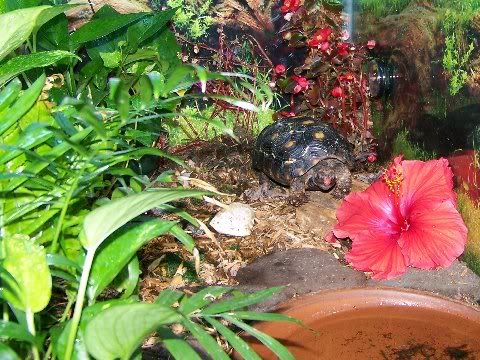- Joined
- Oct 10, 2009
- Messages
- 132
Hello, I have a hatchling red foot from October of last year. He is 2 1/2 inches long. I havent picked him up for a couple days and when I did I noticed his plastron was uneven down at the bottom part. The sides were sunk in a bit and really hard. While the center of the plastron was normal feeling, or the way it was before. What can this be, I know it is not a good thing as it was not this way up until 3 days ago max. He has humidity, 85% and temps in hide is about 85. He stays in the hide mostly, eats daily, I dont see him drink though? I heard I dont need to soak him so I havent been. It seems as if his plastron is drying out though, what is going on, anybody?
Thanks
Cordell
Thanks
Cordell
